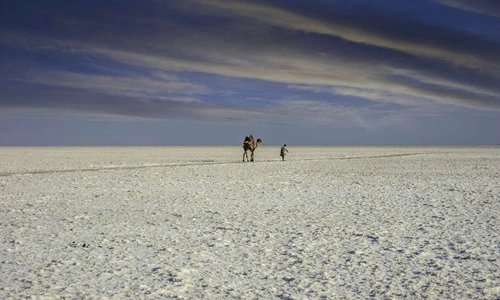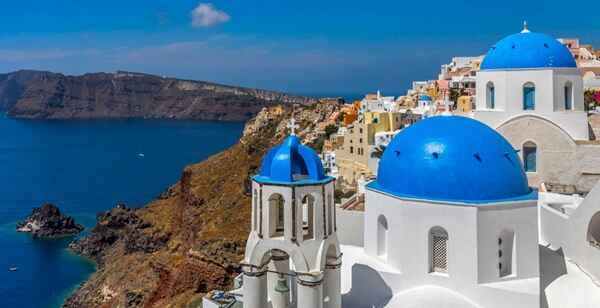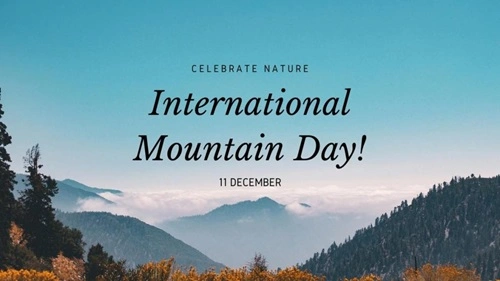You see, there are currently as many as 766 districts in India, but there are quite a few that stand out the most, mainly because of the huge land area they cover. And as you may already know, Rajasthan is the biggest state of India, which means, there must be some big districts in Rajasthan, right? You are partly correct, but there are some districts that are outside of Rajasthan and still count as the biggest ones in the country. If you are intrigued enough already, then keep on reading as we talk about the top 10 largest districts in India as of 2024. Alright, here we go now.
1. Kachchh (Kutch), Gujarat

So, here at the top, we have Kachchh, or as some like to spell it, Kutch. And yes, it’s the largest district of India, indeed a sizable area in the extreme west of the country, holding over 45,674 square kilometers. It’s famous for the Rann of Kutch, a gigantic area of salt desert that becomes a shimmering white wonderland when it’s dry. But it’s not just all about size; Kachchh is a treasure trove of culture and natural beauty too. Imagine the Great Rann, the Little Rann with their intriguing white salt flats, and the wildlife. You must see the atmosphere of this district of Gujarat, it is literally something else in the festive season when many tourists visit it, not just from India, but foreigners as well.
2. Leh, Ladakh
Next up is Leh in the stunning Union Territory of Ladakh, coming in with a vast area of 45,110 square kilometers. Known for its stunning landscapes, high deserts, and rugged mountains, Leh is a place of harsh climates but extreme beauty for sure. It is the repository of major Buddhist monasteries with a strong influence of Tibet, nestled in Ladakh. Then on top of that, adventure lovers have countless options, from trekking, river rafting, to mountain biking. So the suggestion would be: do not miss the Hemis Festival, where the colors and vibrancy of Ladakh come alive.
3. Jaisalmer, Rajasthan
Stepping in at third place, we have Jaisalmer, the “Golden City,” sprawling across 38,401 square kilometers in the middle of the Thar Desert. Not only does it have golden sand, but the city’s breathtaking sandstone architecture shines like gold. Jaisalmer Fort, currently a living fort, attracts crowds of tourists from around the world. And if you are all about lively cultural experiences, then here you will have the Desert Festival with shows of music, dance, and arts in their traditional form.
4. Bikaner, Rajasthan
Coming in fourth, Bikaner covers 30,239 square kilometers of the Thar Desert, right next to Pakistan. This district is the center for historians, with a rich past and stunning architecture seen at the Junagarh Fort and the super interesting Rat Temple of Karni Mata. Of course, Bikaner is no less, as it is also home to the largest Camel Breeding Farm in Asia, not to forget the lip-smacking Bikaneri bhujia snacks.
5. Barmer, Rajasthan
Fifth on the list but still covering a massive 28,387 square kilometers is Barmer. Situated in western Rajasthan, it’s again another part of the huge Thar Desert. Surprisingly, it thrives, and this can be attributed to modern farming methods. This region is also marked with folk culture, relative to the traditional folk music and dance here which is just splendid. Be sure not to miss the local handicrafts here, as this has been a major source of livelihood in Barmer.
6. Jodhpur, Rajasthan
Now, talking about Jodhpur, this place doesn’t fit into any normal district. In the sixth position on this list, it spreads over 22,850 square km. It is often termed the ‘Blue City’ because of those adorable blue-painted houses that lie around the Mehrangarh Fort. Though Jodhpur is much more than a tourist spot, it is a cultural hotspot located right in the heart of Rajasthan.
7. Anantapur, Andhra Pradesh
Now, moving south to Andhra Pradesh, to Anantapur that occupies roughly 19,130 square kilometers and is therefore the seventh largest. Not just about its size, Anantapur is well known for its rough terrains and open fields, very rich in historical facts, and a story to every corner. Hot and dry climates are pretty common but are quite key to some of its large-scale agricultural operations. And if you love your architecture, you simply can’t miss the Lepakshi Temple that is located in Anantapur.
8. Mahbubnagar, Andhra Pradesh
Then, of course, we have Mahbubnagar, or as the locals like to call it, Palamoor, spreading over 18,432 square km in Andhra Pradesh. Right from its historical monuments to the Jogulamba Temple and even a flourishing scene of agricultural affairs, Mahbubnagar is indeed a blend of past and present. The economy here is mainly agriculture-based but there is a push toward the development of small-scale industries too with its close proximity to Hyderabad and it is really on a fast track of growth.
9. Nagaur, Rajasthan
Nagaur, Rajasthan, spread over 17,718 square kilometers, is next. It is not just vast, but also very historical and cultural. Imagine a dry landscape that bustles with the annual cattle fair, which ranks among the largest in India, attracting huge crowds from everywhere. And here is an agriculture scene that is hugely tilted toward the traditional side, the crops are the likes of Bajra and Wheat.
10. Kurnool, Andhra Pradesh
The last place on our list, and certainly not the least in any way, is Kurnool in Andhra Pradesh. It spans 17,658 square kilometers and is a place full of historical curiosity because of places such as Kurnool Fort and the mystical Belum Caves. But that’s not all about the past, as Kurnool is a significant agricultural district. There are rivers like Tungabhadra and Handri flowing through this city, and because of that, the land is pretty fertile, which is ultimately good for agriculture.
Conclusion
All in all, the diversity in the size of districts in India is pretty great. And if you always wanted to know or even visit the biggest districts of India, well, now you have the list. So go ahead.

